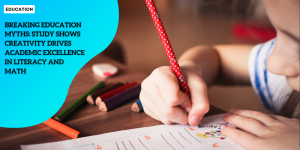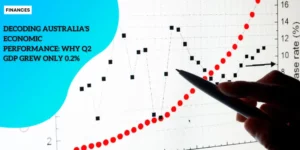88% of Australian Students Master Creative Thinking Skills, Surpassing OECD Average

Anúncios
Australia’s 15-year-olds have shown extraordinary skills in creative thinking, ranking second out of 64 countries and economies.
Their performance is comparable to that of Canada and Korea, with Singapore being the only country with higher scores.
Anúncios
This strong showing highlights the robustness of Australia’s educational system, particularly in its ability to foster creativity among students.
A Top Performer on the Global Stage
The results from the PISA Creative Thinking Assessment underscore Australia’s global standing.
Anúncios
The country’s rank, second only to Singapore, demonstrates the effectiveness of the educational strategies and policies being implemented.
This notable achievement becomes even more impressive when considering the coverage of the assessment, which included diverse countries with varying educational infrastructures.
By the Numbers: A Statistical Overview
An impressive 88% of Australian students met the national proficient standard for creative thinking, which is 10 percentage points higher than the OECD average.
This performance indicates that a significant majority of Australian students possess the ability to generate original ideas, critically evaluate concepts, and refine solutions effectively.
These skills are integral to navigating the complex challenges of the modern world and underscore why creative thinking is highly valued across various domains.
What Sets Australia Apart?
Australia’s performance is aligned with other high-achieving countries such as Canada and Korea.
However, the distinguishing factor lies in the broader educational environment and the targeted initiatives aimed at enhancing creativity in education.
Programs and curricula encouraging innovative thinking and problem-solving play a vital role in shaping students’ abilities to think outside the box.
Implications for the Future
Australia’s outstanding performance in creative thinking is not just a point of national pride but a strategic advantage for the future.
Creative thinking skills are crucial for personal development, professional success, and addressing global issues.
The ability to think creatively helps individuals develop innovative solutions to new and existing problems, making them valuable contributors to society.
This achievement also sets the stage for further advancements in education.
With ACER appointed to lead the next PISA study in 2025, Australia is poised to continue its focus on developing and assessing creative thinking skills, ensuring that future generations are even better prepared for the challenges and opportunities ahead.
By embedding creativity into the core of its educational practices, Australia is not only setting its students up for success but also contributing to a more innovative and resourceful global community.
PISA Creative Thinking Assessment Overview
Introduced for the first time in 2022 by the OECD, the PISA Creative Thinking Assessment marks a pivotal step in evaluating 15-year-olds’ capabilities on a global scale.
This innovative assessment zeroes in on students’ aptitude to generate original ideas, evaluate concepts critically, and refine solutions effectively. Think of it as a comprehensive creative thinking health check for the youth.
This inaugural creative thinking assessment pulled in data from over 13,430 Australian students, as well as contributions from their principals and teachers.
This broad participation provided a well-rounded picture of students’ skills and the educational environment fostering them. It’s worth noting that this wasn’t just about raw data; it was about understanding the educational ecosystems enabling these young minds to thrive.
Measuring Abilities to Generate, Evaluate, and Improve Ideas
The core of this assessment was multifaceted. It looked at how students could generate novel ideas, which is essential for creativity.
But it didn’t stop there. It also measured the ability to critically evaluate those ideas and improve upon them.
This trio of skills—creation, evaluation, and improvement—is vital for real-world problem-solving and innovation.
Australia’s performance was impressive, to say the least.
The proportion of high-performing students in creative thinking stood significantly above the OECD average of 27% across all states and territories.
This superior performance underscores the robustness of Australia’s educational framework in nurturing creative talents.
Data Collection and Insights
The extensive data collection effort included input from more than just the students.
Principals and teachers also shared their insights, providing a holistic view of the educational strategies at play.
The involvement of these educational stakeholders was crucial for a nuanced understanding of how classroom environments and teaching methodologies contribute to developing creative skills.
According to Lisa De Bortoli, lead author of ACER’s report, the data provides valuable insights into the imaginative and adventurous capabilities of Australian 15-year-olds.
This information is critical because it lays the foundation for developing innovative and effective responses to various challenges—be they personal, professional, or global.
Australia’s performance in this realm is comparable to that of Canada and Korea, with only Singapore achieving higher scores.
This sets a high bar for future educational practices and assessments, reflecting well on the efforts currently being made in Australian schools.
The creative thinking assessment is more than a test; it’s a reflection of how well educational systems prepare students for future challenges.
As we look forward to the next phase of educational assessment, Australia’s position in the creative thinking arena offers valuable lessons and benchmarks for other countries to follow.
Regional Performance Distribution
Australia’s success in the PISA Creative Thinking Assessment is notable not just on a national scale but also regionally.
The data highlights that high-performing students significantly exceed the OECD average of 27% across all states and territories, showcasing the widespread effectiveness of the Australian education system.
Regional Breakdown
Performance in creative thinking varies across different regions in Australia, but every state and territory demonstrates a strong showing.
The percentage of high-performing students ranges from 34% to 49%, which is well above the OECD average.
This significant achievement underscores the consistent quality of education that fosters creative thinking skills across the country.
ACT: The Leading Region
The Australian Capital Territory (ACT) emerges as the leader in this regard, with an impressive 91% of its students meeting the national proficient standard.
This figure is particularly noteworthy because it reflects a widespread ability among students in the region to generate original ideas, critically evaluate concepts, and propose improvements.
The success of ACT indicates robust educational frameworks that provide students with the necessary tools and environment to excel in creative thinking.
Statewide Excellence
Other states and territories also show impressive results.
For instance, New South Wales, Victoria, and Queensland demonstrate strong performances, closely trailing the ACT.
These regions have robust educational policies and initiatives in place that emphasize creative thinking as a core skill.
- New South Wales: Strong performance with high proficiency rates in creative thinking.
- Victoria: Continues to build on its educational strengths with significant numbers of high performers.
- Queensland: Shows impressive results with many students meeting and exceeding national standards.
Australia’s overall excellence in creative thinking across different regions reflects a cohesive national effort to promote and develop these skills among students.
By ensuring that educational excellence is a nationwide priority, Australia can continue to foster a new generation of creative thinkers ready to tackle future challenges.
Recognizing the contributions of all regions and their educational systems, it’s clear that Australia’s emphasis on creative thinking isn’t limited to one area but is a nationwide achievement.
This regional success sets the stage for ongoing innovation and excellence in the Australian education system.
Significance and Future Implications
Importance of Creative Thinking Skills
Creative thinking skills have become essential in every sphere of life—be it personal, professional, or addressing global challenges.
As the world evolves at a rapid pace, possessing the ability to generate original ideas, critically evaluate them, and improve upon them can set individuals apart.
For Australian students, mastering these skills means they are well-equipped to tackle complex problems and find innovative solutions efficiently.
This adaptability is not just beneficial but necessary for thriving in an increasingly interconnected and unpredictable world.
Australia’s Educational Success
The recognition of Australia as one of the world’s most successful countries in fostering creative thinking capacities is a significant achievement.
This recognition proves that the Australian education system’s strategies and teaching methods are effectively nurturing students’ abilities to think creatively and critically.
According to Lisa De Bortoli, lead author of the ACER report, Australian students are “imaginative, adventurous, confident, and capable” in their creative thinking.
This foundational skill set is groomed within classroom environments that encourage creativity and critical thinking, setting students up for success on multiple levels.
The Role of ACER and Future Prospects
In a testament to its efficacy and impact, the Australian Council for Educational Research (ACER) has been appointed by OECD to lead the next PISA study in 2025.
This appointment not only highlights the confidence in Australia’s educational research capabilities but also underscores a continuing commitment to assessment innovation.
As ACER takes on this crucial role, there is a solid foundation laid for further developments and refinements in educational assessments, ensuring that Australian students remain at the forefront of creative problem-solving globally.
In conclusion, Australia’s stellar performance in the PISA Creative Thinking Assessment underscores the critical role of fostering creative thinking in education.
As students continue to excel, their preparedness for future challenges is evident, promising a generation of thinkers poised to make meaningful contributions both locally and globally.






